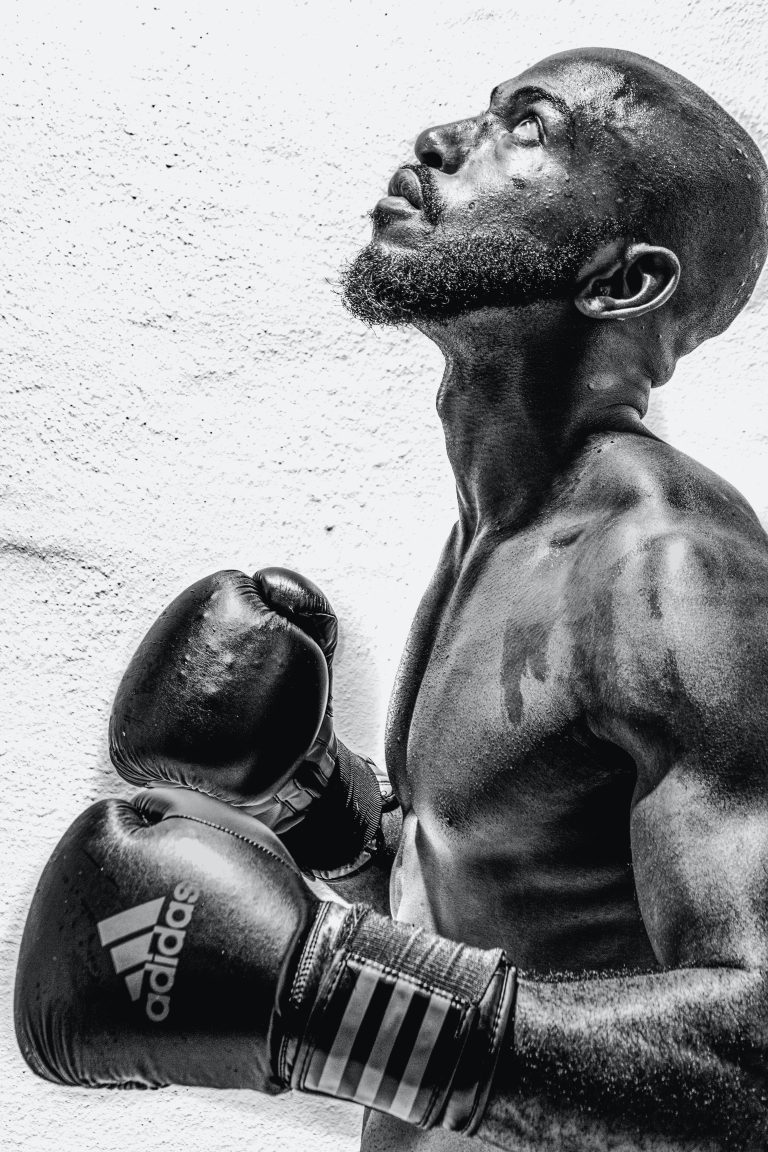Why Shotokan Karate is Not a Recommended Style
Martial arts have been part of human culture in various forms for centuries. Amongst the many styles of martial arts, Shotokan Karate has gained widespread popularity across the globe. Shotokan Karate is a traditional Japanese martial art that emphasizes speed, agility, and technique. It consists of various attacking and defensive moves, including striking, blocking, and kicking. Despite its popularity, there is always a debate about its benefits and limitations. In this blog post, we will explore why Shotokan Karate is not a recommended style.
1. Limited Practicality in Real Situations
One of the main criticisms of Shotokan Karate is that its techniques are not very practical in real-life situations. Shotokan Karate practitioners mostly train for a tournament-style competition, which does not reflect the reality of an actual fight. While Shotokan Karate includes techniques like punching, blocking, and kicking, these tactics did not always work effectively in real-life scenarios. Moreover, Shotokan Karate’s strict training regime may not be suitable for a real-life encounter. In contrast, other martial arts like grappling and Brazilian Jiu-Jitsu focus on actual fighting scenarios and include tactics like take-downs, joint locks, and choke holds, making them more practical.
2. Limited Range of Techniques
Shotokan Karate has been criticized for its lack of variety of techniques. The style emphasizes some specific techniques, which have been passed down from generation to generation. While Shotokan Karate might have some excellent techniques, it lacks the versatility of other martial arts that offer a wide range of defensive and offensive maneuvers. The limited range of techniques in Shotokan Karate might make it less attractive to students who wish to learn a more diverse skill set compared to styles like Taekwondo or Kickboxing.
3. Overemphasis on Basics and Kata
Another significant criticism of Shotokan Karate is that it places too much emphasis on katas and basics. While both are essential components of Shotokan Karate, over-focusing on them may lead to a lack of martial arts and self-defense training. The emphasis on katas and basics might limit the ability of practitioners to react appropriately in diverse fighting situations. This overemphasis on katas and basics may also foster a rigid mindset in students who may feel unable to adapt to different combat scenarios.
4. Risk of Physical Injury
All martial arts carry a risk of physical injury, and Shotokan Karate is no different. The style’s emphasis on heavy sparring and repetitive drills might lead to long-term injuries. The sparring techniques used in Shotokan Karate may also increase the risk of concussions, bruises, and fractures. While these risks exist in most martial arts, Shotokan Karate’s style and training methodology might make it more prone to injuries.
5. Inadequate Training for Realistic Self-Defense
The ultimate goal for anyone learning martial arts is to know how to defend themselves in real situations. Shotokan Karate focuses too much on tournament-style competitions that do not reflect the reality of a self-defense situation. The style does not include grappling moves, and its use of katas and basics leaves it deficient in practical self-defense tactics. While Shotokan Karate can help develop agility, balance, and technique, it fails to provide students with adequate training for actual self-defense situations.
Final Thoughts
Shotokan Karate is an impressive martial art and has gained a considerable following. However, it has many limitations and is not the most recommended style for those seeking practical self-defense training. Shotokan Karate’s style emphasizes katas and repetitive basics, reducing its practicality in real-life scenarios. The style’s heavy sparring techniques also increase the risk of physical injury. For those seeking a more diverse range of techniques and practical self-defense tactics, other martial arts like Brazilian Jiu-Jitsu, Krav Maga, or Taekwondo may be a better fit.
Why Shotokan Karate is Bad – Answering the Most Commonly Asked Questions
Introduction
Karate has always been one of the most popular martial arts around the world. However, there is a lot of debate on various forums and blogs about why Shotokan Karate is bad. In fact, some people believe that Shotokan Karate can be dangerous and ineffective as a martial art. In this blog post, we will try to answer some of the most frequently asked questions regarding why Shotokan Karate is bad.
Question 1: Is Shotokan Karate a Good Fighting Style?
Shotokan Karate is primarily a fighting style that is based on the four pillars of techniques, katas, kumite, and spirit. With its deep roots in traditional martial arts, it is widely regarded as a highly effective system when it comes to self-defense. However, some critics argue that the style is not very practical in real-life situations because most of the techniques involved are too rigid and require a lot of time to master.
Question 2: Is Shotokan Karate Ineffective for Self-Defense?
As mentioned earlier, Shotokan Karate is a highly effective martial art for self-defense. The style places great emphasis on developing speed, agility, and accuracy in striking, blocking, and kicking. However, some critics argue that the style is not very practical in real-life situations because most of the techniques involved require a lot of time to master.
Question 3: Are Shotokan Karate Techniques Too Rigid?
One of the most significant criticisms of Shotokan Karate is its rigid techniques, and critics believe that this makes the style impractical in real-life fighting situations. However, this is not entirely true. Most traditional martial arts styles, including Shotokan Karate, are based on a set of pre-determined forms and techniques that are trained through repetition to create muscle memory. After attaining skill in the basics, a practitioner will develop the ability to be fluid and effective, even under duress.
Question 4: Is Shotokan Karate Dangerous for Children?
It is a common misconception that Shotokan Karate is dangerous for children. However, this is not true. Like any other contact sport, Shotokan karate does involve physical contact, but it is highly regulated to ensure that the children are safe. The instructors are trained professionals in teaching children how to move, fall, and work with others in a safe and healthy manner. Contrary to popular belief, children are rarely injured while practicing Shotokan Karate.
Question 5: Is Shotokan Karate Too Traditional?
Some critics argue that Shotokan Karate is too traditional and is not keeping up with the changing times. However, Shotokan Karate has evolved through the years, and modern versions of the style have incorporated other elements of martial arts, including ground grappling, striking and kicking combinations, and pressure point techniques.
Question 6: Are There Better Martial Arts Than Shotokan Karate?
The effectiveness of any martial art depends on many factors, including the skill of the practitioner and the specific context in which it is used. While some other martial arts may be more practical for specific situations, like MMA or Boxing, Shotokan Karate is a highly effective martial art that provides several benefits, including increased fitness, mental focus, and self-discipline.
How to Disagree with „Why Shotokan Karate is Bad“ Blog Post
If you are reading this article, you are likely wondering about the validity of the claim that Shotokan Karate is a bad martial art. The statement can be troubling, particularly if you have been practicing it for several years or years. In this article, we will provide you with a counter argumentative perspective against the aforementioned blog. We will provide you with realistic and practical steps on how to form and support your opinions.
Step 1: Research
The first step is to carry out thorough research about Shotokan Karate. This includes the history of the martial art, its current status, and the training processes involved. You can consult articles, books, and personal blogs that provide quality information about Shotokan Karate. It’s essential to gather all relevant information to support your stance. Once you familiarize yourself with the topic, you can proceed to form informed opinions that you can present confidently.
Step 2: Write an Outline
With the information you have gathered, you must now plan your approach to refute the claim that Shotokan Karate is bad. Start by drafting an outline that presents your arguments in a logical order. You can group related points together, ensuring that they flow naturally. Furthermore, you must acknowledge the counterargument that Shotokan Karate is indeed a bad martial art. It’s important to show that you understand both sides of the argument.
Step 3: Organize Your Points
With your outline ready, your next step is to dive into the main points of your argument. You must be clear about your reasons for believing Shotokan Karate is a great martial art. You can divide your points into categories such as training techniques, physical benefits, and mental focus. Remember to cite evidence that backs up your argument. You can use personal experience, scientific research, and facts to support your claims.
Step 4: Outline Common Misconceptions
It’s no secret that people have different opinions and beliefs about various topics. With that in mind, it’s easy to understand why some may hold negative opinions regarding certain martial arts styles. For example, the author of the blog post in question may have had a poor experience with Shotokan Karate. However, it’s crucial to be able to recognize and address common misconceptions about martial arts. If the author of the blog post in question did indeed have a negative experience with Shotokan Karate, it may be helpful to highlight that his experience is not necessarily representative of the martial art as a whole.
Step 5: Conclusion
In conclusion, there are many factors to consider when deciding whether Shotokan Karate is an excellent martial art or not. Research, planning, organizing your points, and addressing counterarguments are essential steps that can help you form an informed opinion. It’s important to have the confidence to share your opinion and be open to hearing opinions that differ from yours. With this guide, you should be well-equipped to present an alternative perspective to the blog post’s claim that Shotokan Karate is a terrible martial art. Remember, people have different preferences, so the importance of being respectful of each other’s opinions cannot be overstated.
Final Thoughts
This guide serves to remind us that it’s possible to disagree with someone’s opinion or belief. Everyone has his or her opinions, but it’s essential to have a well-informed and balanced opinion based on facts and evidence. With the right approach and mindset, reasonable debates and conversations can lead to mutual understanding and improved knowledge.
Inhaltsverzeichnis





